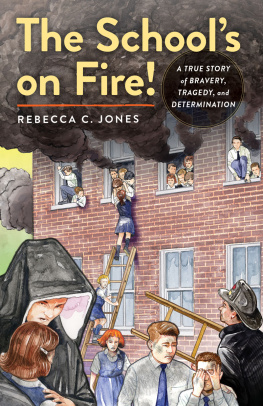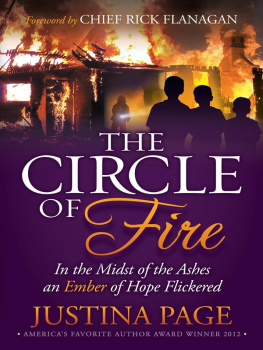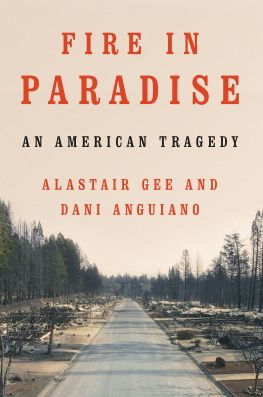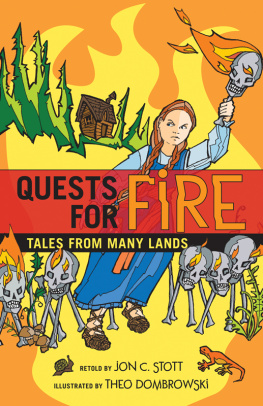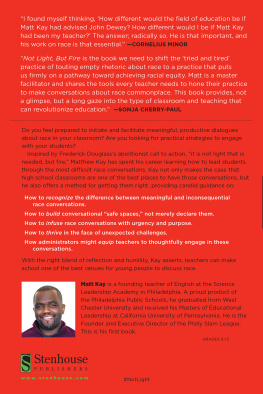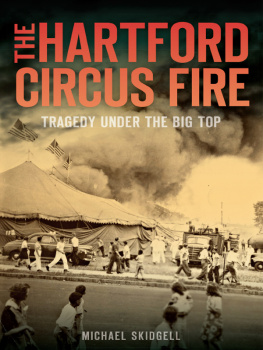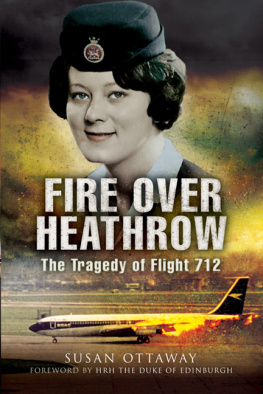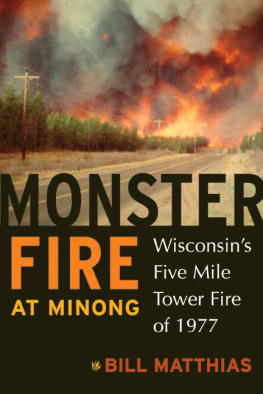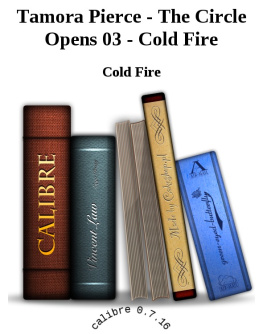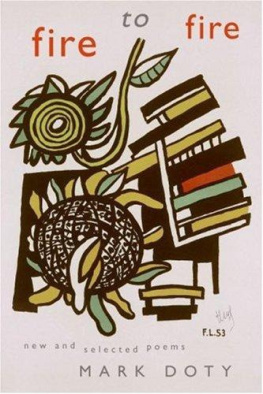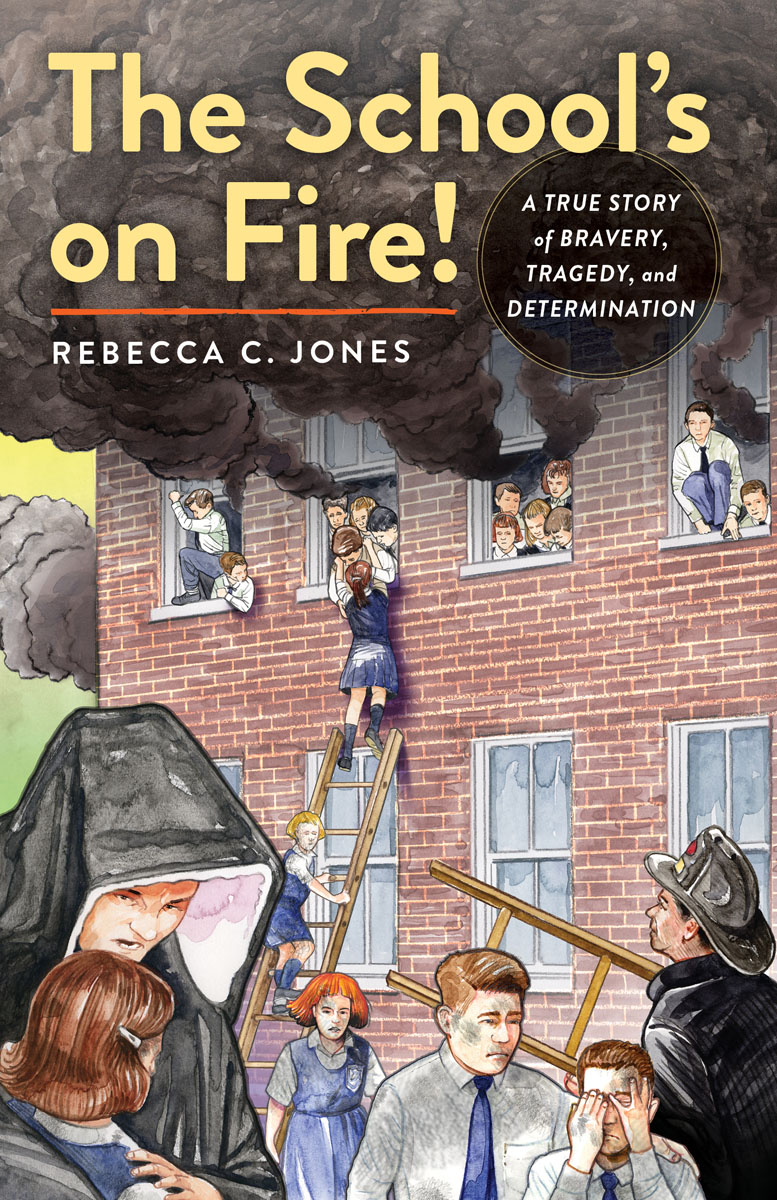
W ritten for the 60th anniversary of the blaze that changed American fi re laws, The Schools on Fire! follows the path of the December 1958 fi re that killed 92 kids and 3 teachers at Chicagos Our Lady of the Angels School. Recounted in a fast-paced, blow-by-blow, classroom-by-classroom narrative, the tragedy is made accessible by focusing on the survivors stories of courage, quick thinking, and luck. Author Rebecca C. Jones draws heavily from interviews with those who were there and includes compelling historic photos of the tragedy. The Schools on Fire! finishes with a useful What to Do in Case of Fire appendix with practical information for kids facing dangerous situations. Additional informative sidebars, resources for further learning, and source notes make this an invaluable addition to any students bookshelf.
REBECCA C. JONES is the author of many books for children and young adults, including Matthew and Tilly, which was an ABA Pick of the List and an NCSS Notable Trade Book. She holds bachelors and masters degrees in journalism from Northwestern University.
Jacket design: Jonathan Hahn
Front cover illustration: Rick Tuma
PRINTED IN THE UNITED STATES OF AMERICA

Copyright 2019 by Rebecca C. Jones
All rights reserved
Published by Chicago Review Press Incorporated
814 North Franklin Street
Chicago, Illinois 60610
ISBN 978-0-912777-62-7
Library of Congress Cataloging-in-Publication Data
Names: Jones, Rebecca C., author.
Title: The schools on fire! : a true story of bravery, tragedy, and determination / Rebecca C. Jones.
Description: Chicago, Illinois : Chicago Review Press, 2018. | Includes bibliographical references and index. | Audience: Age 10 and up. | Audience: Grade 4 to 6.
Identifiers: LCCN 2018009633 (print) | LCCN 2018014856 (ebook) | ISBN 9780912777634 (adobe pdf ) | ISBN 9780912777641 (epub) | ISBN 9780912777658 (kindle) | ISBN 9780912777627 (hardback)
Subjects: LCSH: Our Lady of the Angels School (Chicago, Ill.)Fire, 1958Juvenile literature. | FiresIllinoisChicagoJuvenile literature. | BISAC: JUVENILE NONFICTION / History / United States / 20th Century. | JUVENILE NONFICTION / History / United States / State & Local.
Classification: LCC LD7501.C434 (ebook) | LCC LD7501.C434 J66 2018 (print) | DDC 363.37/650977311dc23
LC record available at https://lccn.loc.gov/2018009633
Interior design: Sarah Olson
Printed in the United States of America
5 4 3 2 1

To the kids who survived the fire and lived with the memories of OLA


CONTENTS

PROLOGUE

FIRE ALARM!

What kind of fire drill is this?
Carol Vinceri

I t was near the end of the school day on December 1, 1958, and Carol Vinceri was feeling antsy. So when her seventh-grade teacher asked for a volunteer to go downstairs and help a first-grade teacher, Carol quickly raised her hand.
More than half a century later, Carol cant remember exactly what she was doing in the first-grade classroom when she heard the fire alarm. But she clearly remembers everything that happened after that.
Some of the first graders jumped or cried out at the sound of the alarm. Carol had been through so many school fire drills, though, that she knew exactly what to do: she helped the first graders line up at their classroom door, led them out to the hall, and walked quickly toward the schools front door.
Carol was the first person to reach the door, and when she tried to open it, the door seemed stuck. I had the feeling, when I was trying to get the door open, that somebody was holding it on the other side, she remembers. But I kept trying and trying, and finally I got it open.
Once outside, Carol led the first graders down the steps, away from the building, and across the street. Then she turned around and faced the school. Looking up to her own seventh-grade classroom on the top floor, she was surprised to see a window pop open and smoke begin to billow out.
Carol stared at the smoke. Well, thats strange, she remembers thinking. What kind of fire drill is this? She couldnt believe her classroom was filling with real smoke. She decided firemen must have pumped fake smoke into the building to make the fire drill seem more realistic.
Then she moved a few steps so she could see another section of the building. There she saw flames leaping out classroom windows. And kids crying for help. This isnt pretend, Carol thought. This is real.

This model shows what Our Lady of the Angels School looked like at the time of the fire. The miniature school, made in the early 2000s by Stuart Gootnick of Chicago, now sits in the Fire Museum of Greater Chicago.
It certainly was. Carols schoolOur Lady of the Angels School in Chicago, Illinoiswas destroyed on that cold December day, in one of the worst school fires in American history. Carol (and all of the first graders she was helping) escaped without physical injury, but many others did not.
The fire horrified Americans. How could such a thing happen? Werent schools supposed to be safe?
On the outside, Our Lady of the Angels certainly looked strong and safe. The school used two smaller buildings for kindergartners and some first graders, but most students were in the main buildinga sturdy red-brick structure with three floors of classrooms. (Most of the schools 24 classrooms were on the main buildings top two floors, but a few were located in a basement that rose a half story above ground level.) The U-shaped building had a narrow courtyard between its north and south wings.
Covering more than half a city block, Our Lady of the Angels was the largest structure in its neighborhood on Chicagos West Side. Indeed, Our Lady of the Angelsor OLA, as it was known in the neighborhoodwas one of the largest elementary schools in the country, with more than 1,600 students, from kindergarten through eighth grade.
OLA was a Catholic school near a church with the same name. The vast majority of its students came from families who lived in small apartment buildings and houses within a few blocks of the school and church.
In the middle of the 20th century, Catholic schools were so common in Chicago that one appeared every few blocks. Even people who werent Catholic often identified their neighborhood by the name of the Catholic church and school closest to their home. With 417 elementary and 93 high schools, the Archdiocese of Chicago ran the third-largest school system in the country, behind New York City Public Schools and Chicago Public Schools. (At the time, Chicago was the second-largest city in the United States.)
Next page
